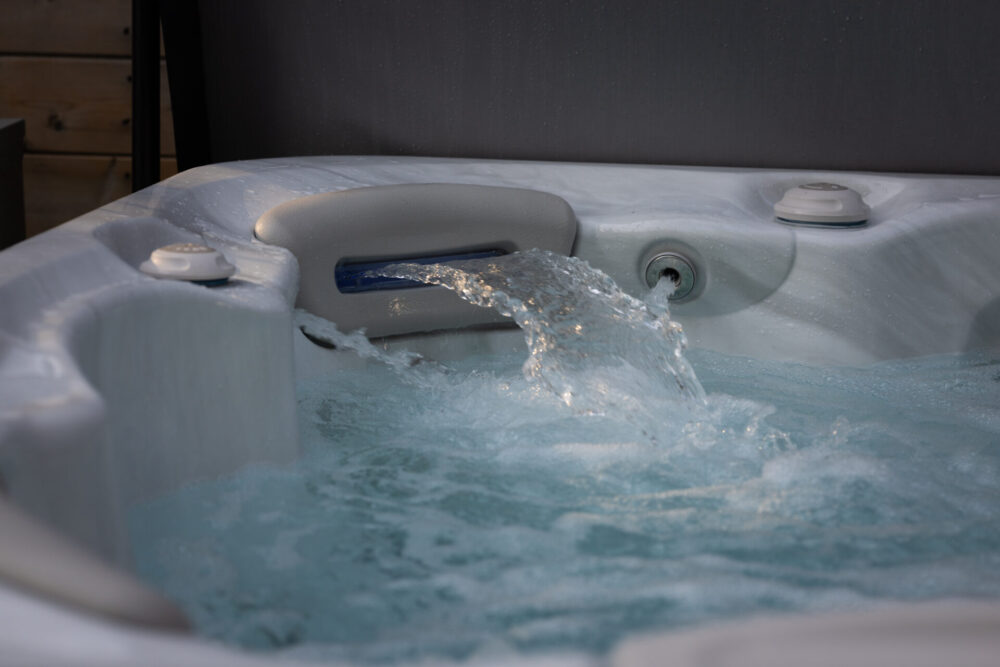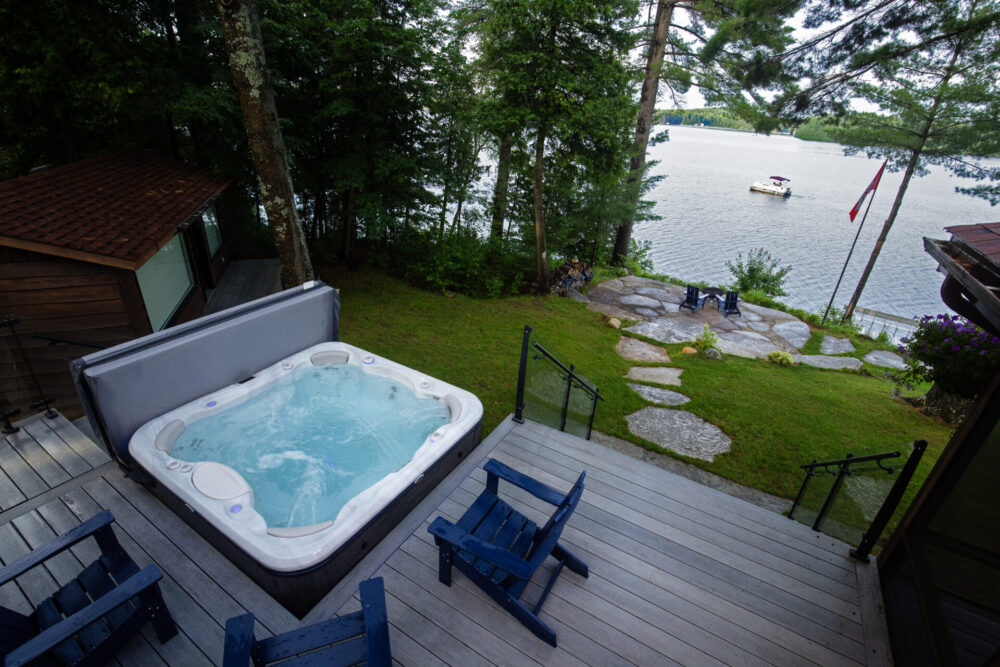Up to $9,000 Off Hot Tubs
Starting at $5,495 or $93/mo
Shop Now

Contents
Congratulations on your new hot tub purchase from Great Bay Spa & Sauna! As you begin your journey into hot tub ownership, you may find yourself wondering about all those bottles of chemicals and what exactly they do. Don’t worry – while hot tub water chemistry might seem complex at first, it’s actually quite manageable once you understand the basics.
This guide will walk you through everything you need to know to keep your water clean, clear, and safe for everyone to enjoy. Let’s demystify hot tub chemistry and turn you into a confident spa owner!
Unlike your bathtub that gets drained after each use, your hot tub water stays in place for months at a time. During that period, it faces a variety of challenges:
Proper water chemistry prevents these issues from turning your relaxing retreat into a cloudy, smelly, or even unsafe environment. When maintained correctly, your hot tub water should be crystal clear, odorless, and gentle on your skin, eyes, and equipment.
Hot tub water maintenance revolves around four key elements:
Let’s explore each of these elements and how to keep them in perfect balance.

Sanitizers are arguably the most important chemicals in your hot tub arsenal. They kill bacteria, viruses, and other microorganisms that can quickly multiply in the warm water environment.
At Great Bay Spa & Sauna, we recommend either chlorine or bromine as your primary sanitizer. Here’s how they compare:
Chlorine:
Bromine:
Many of our customers prefer bromine for hot tubs because it’s more stable at high temperatures and creates fewer odors. However, chlorine remains a popular and effective choice, especially for those who are sensitive to bromine.
The most effective way to add sanitizer is to:
Pro tip: Keep your air valves closed when adding chemicals to prevent excessive off-gassing of your sanitizer.
pH measures how acidic or basic (alkaline) your water is on a scale from 0-14, with 7 being neutral. For hot tubs, the ideal pH range is 7.2-7.8, with 7.4-7.6 being the sweet spot.
To raise pH: Use a pH increaser (sodium carbonate) To lower pH: Use a pH decreaser (sodium bisulfate)
Always add chemicals in small amounts, wait 20-30 minutes with jets running, then retest before making additional adjustments.
Total alkalinity acts as a buffer that helps prevent pH from changing rapidly. Think of it as the stabilizer that keeps your pH steady even when new influences (like rain, body oils, or chemicals) enter the water.
The ideal range for total alkalinity is 80-120 ppm, with 100 ppm being optimal for most hot tubs.
Important: Always adjust total alkalinity before adjusting pH, as changes to alkalinity will often affect pH as well.
Calcium hardness measures the amount of dissolved calcium in your water. This may seem less important than the other parameters, but balanced calcium levels protect your hot tub’s components.
The ideal range for calcium hardness is 175-250 ppm.
Now that you understand the basics, here’s a simple routine to keep your hot tub water in perfect condition:

For your convenience, here’s a starter shopping list of chemicals you’ll need:
All these products are available at Great Bay Spa & Sauna, and our experienced staff can help you select the right options for your specific hot tub model.
Even with regular maintenance, you may occasionally encounter water issues. Here’s how to address the most common problems:
Potential causes:
Solution:
Potential causes:
Solution:
Potential causes:
Solution:
To wrap up, here are some expert tips from our team at Great Bay Spa & Sauna:
At Great Bay Spa & Sauna, we’re committed to helping you enjoy your hot tub ownership experience. If you ever have questions about water chemistry or encounter issues you can’t resolve, our team is just a phone call away at 1-800-436-8893.
We also offer water testing services at our Portsmouth showroom, where we can provide customized recommendations for your specific water conditions.Maintaining proper water chemistry isn’t just about protecting your investment—it’s about ensuring every soak is as relaxing and enjoyable as possible. With these basics under your belt, you’re well on your way to becoming a hot tub chemistry expert!